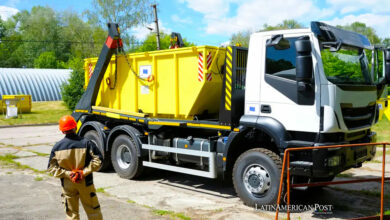Colombia: the National Development Plan and the environment
Listen this article
The road map that would determine how Colombia will be handled for the next four years has generated controversy. What will be the management of the environment in the PND?

Colombia, the second most biodiverse country in the world, is at a critical political moment that will define the way in which the country's resources will be administered and that will establish the strategic guidelines of the president to lead the nation through the National Plan of Development (PND, in Spanish).
Leer en español: Colombia: el Plan Nacional de Desarrollo y el medio ambiente
The National Planning Department defines the PND as "the formal and legal instrument by means of which the Government's objectives are set allowing the subsequent evaluation of its management." Given its importance and duration, the PND is highly analyzed and discussed, the plan presented by Iván Duque, entitled 'Pact for Colombia, pact for equity', has provoked heated debates for different reasons.
For example, Iván Duque proposed that article 181 gives him extraordinary powers to be able to modify the State during a period of six months; regarding the pension contribution of independent workers, it was proposed to increase the base from 40% to 55%; the allocation of resources for the post-conflict raised polemic among who support the peace process, since there was no assigned money.
The PND has other objections such as the energy subsidy to stratum 3, the liquor tax , the unification of the budget, among others. The plan is under debate and it is expected that by May 6, it will have the approval to be able to run. In this article, we will focus on understanding what will happen to the environment in the next four years. Iván Duque's proposals focus on four major themes:
1. Climate change: the Pact for Sustainability proposes "to move towards the transition of productive activities committed to sustainability and mitigation of climate change". However, according to Isabel Cavelier, in statements made by Semana Sostenible, the strategies of the PND are not precise and lack ambition to fulfill the pacts accepted by the nation.
In the case of sustainable livestock, the plan increases the land to carry out this action; from 72000 hectares, it is increased to 147000. However, there are already 14 million hectares dedicated to livestock when there are only 2.7 million suitable for the activity. This shows the lack of vision of sustainable development and environmental awareness.
On the other hand, the biggest concern of environmentalists is the goal to stop deforestation. The PND does not propose strategies to mitigate or stop it, on the contrary, it raises the possibility of maintaining the annual deforestation rate. The proposal not only goes against global measures to counteract this phenomenon, which contributes highly to climate change, but also evidences the current government's lack of concern for the environment and its resources.
2. Water management: the management of this important resource is fundamental for the country to be able to boost national development. The PND seems aware of this aspect, but it ignores other fundamental elements such as reducing the use of this liquid in the agricultural sector. However, as stated by Juan Pablo Romero, Water Funds specialist at The Nature Conservancy, we must celebrate that the plan includes that the "Environment Minister will manage the implementation of collaborative platforms that allow the articulation of investments and public and private actions around the basins, for the integral management of water resources ".
Also read: Colombia could lose 17,000 hectares of beach by 2040
3. Mining: 'Pact for mining-energy resources for sustainable growth and the expansion of opportunities', this is the title that describes the map for the management of mining resources. Despite the use of the word sustainable, the proposal is to increase the exploitation of hydrocarbons. The PND aims to increase the extraction of coal, increase the reserve and production of hydrocarbons, quadruple the number of oil exploratory wells, among others. The transition and economic diversification to sustainable energies is not clear.
On the other hand, the formalization of artisanal mining is proposed to decrease the 68% that it represents in illegal mining. A titanic task, if one considers that this is not the first government to put the issue on the table. Additionally, as highlighted by Mauricio Cabrera, coordinator of the GEF project on biodiversity and mining, the PND seems to be short on the proposals it makes. For Cabrera, it is necessary "to establish ambitious commitments and manage their compliance within the government."
4. Amazon: the lung of the world is in crisis due to the deforestation to which it is subjected, not only in Colombia but in the other countries that share it. The development of the region must be sustainable and balancing the economic and environmental perspectives. For this reason, it is alarming that the PND proposes to stabilize the deforestation figure instead of proposing strategies to stop it. Allowing the deforestation of half a million hectares over the next four years opens the possibility for aggressive economic models to be imposed on the region.
Wendy Arenas, director of the Alisos Foundation, explains that "the government must avoid at all costs that, protected by a literal interpretation of the rate of deforestation, environmental predators destroy forests until they reach the unacceptable sum of 570,000 hectares in the next four-year period ".
LatinAmerican Post | Marcela Peñaloza
Translated from "Colombia: el Plan de Desarrollo y el medio ambiente"





